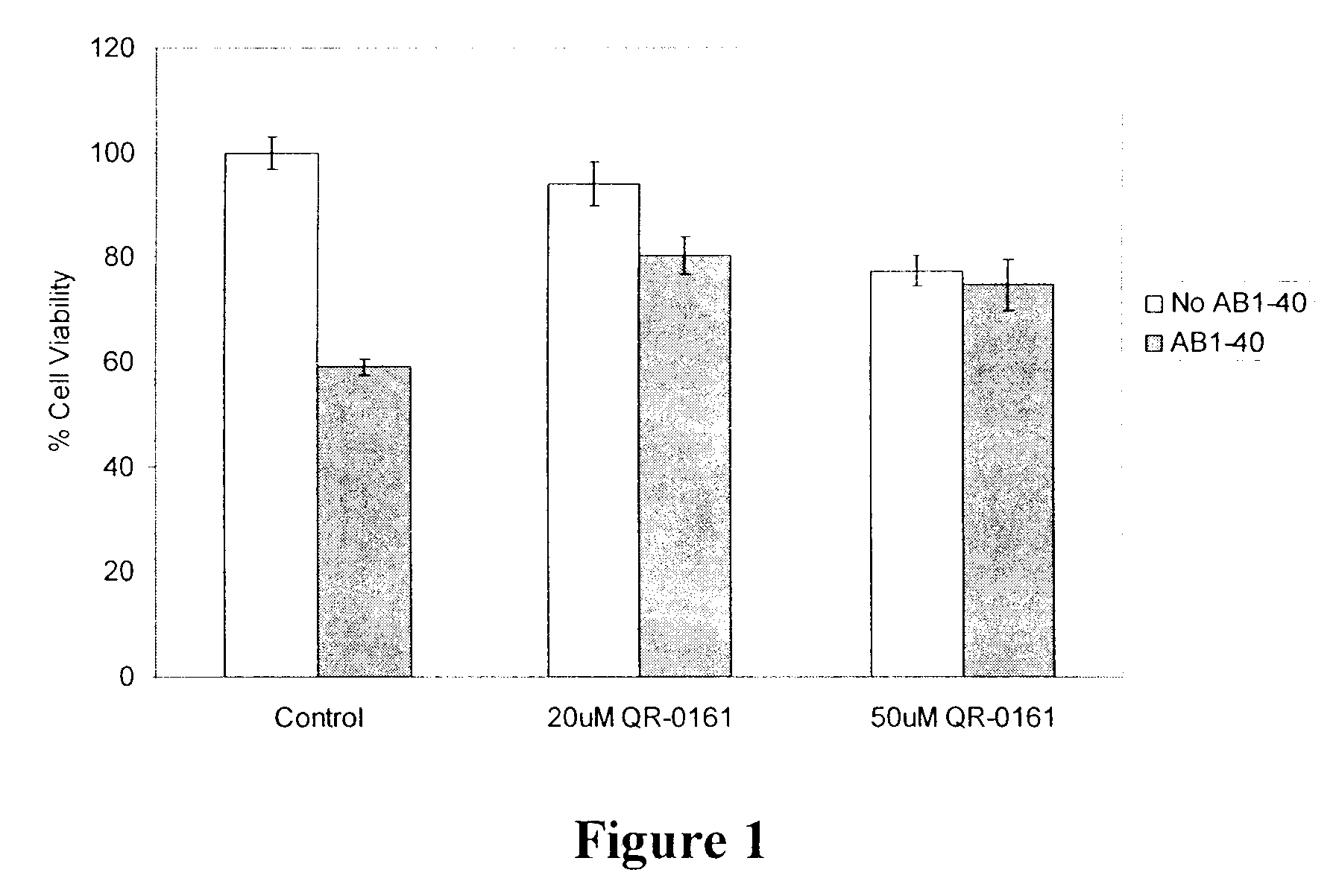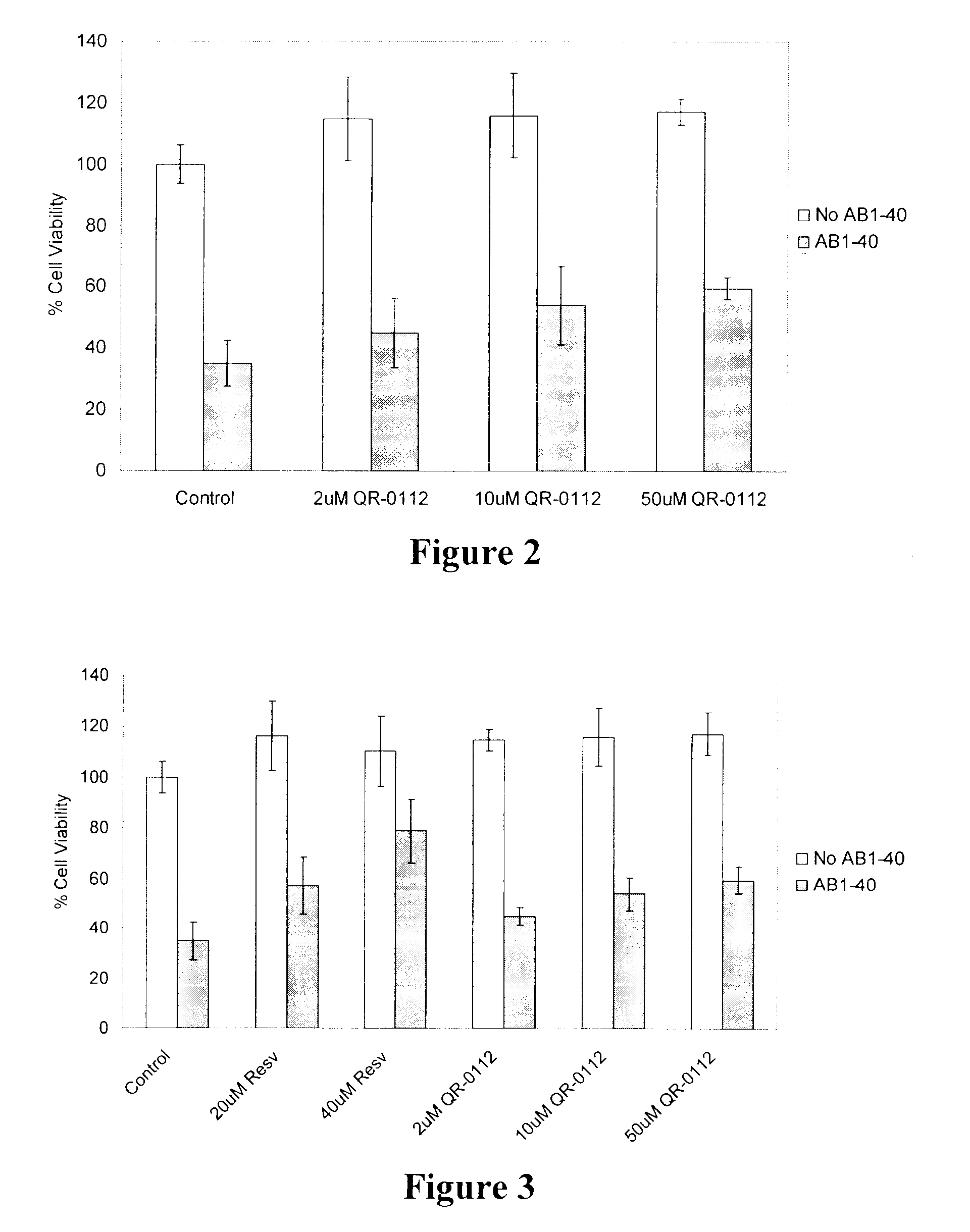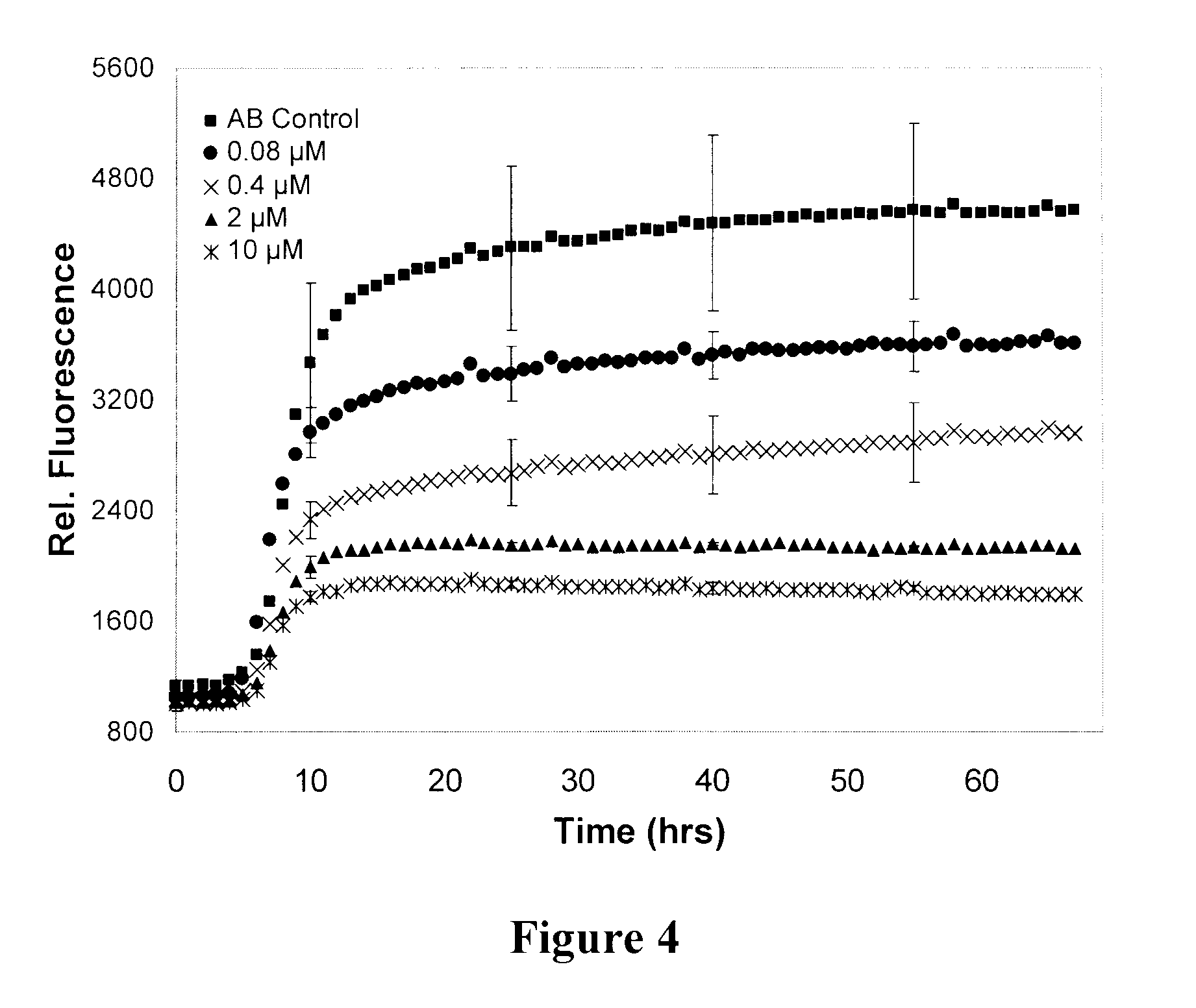Compounds and methods for treating protein folding disorders
a protein folding disorder and compound technology, applied in the field of compound and method for treating protein folding disorders, can solve the problems of increasing mental and physical incapacity, institutionalization and death, and inevitably following the onset of the disease, and achieve the effect of sufficient time for metabolism
- Summary
- Abstract
- Description
- Claims
- Application Information
AI Technical Summary
Benefits of technology
Problems solved by technology
Method used
Image
Examples
example 1
Preparation by Suzuki-Coupling Reaction
[0187]Compounds QR-0159, QR-0160, and QR-0162 were prepared by Suzuki-coupling reaction. The synthesis reaction is depicted in Scheme 1 below (Ts is para-toluene sulfonic acid).
[0188]The following general procedure was used.
[0189]General Procedure for Suzuki-Coupling Reaction
[0190]To a degassed solution of the aryl halide (84, 86, 87 or 90, Schemes 1 and 2) in DMF (4.0-6.0 mL) was added aryl boronic acid (53, 55, 63 or 85, 1.2 equiv.), Pd(OAc)2 (0.05 equiv.) and K2CO3 (2 equiv.) at room temperature. After degassing and purging with argon (done thrice), the reaction mixture was stirred at 90° C. Reaction times varied from 1.5 hours to 12 hours. The mixture was allowed to cool to room temperature and diluted with H2O (15 mL). The aqueous solution was extracted with ethyl acetate (5×15 mL) and the combined organic layer was concentrated under reduced pressure.
[0191]The residue was purified by flash column chromatography to yield the following comp...
example 2
Deprotection of O-methyl Groups
[0199]O-methyl groups were deprotected to give compounds QR-0164, QR-0165 and QR-0166. Their syntheses are depicted in Scheme 2 below.
[0200]The following general procedure was used.
[0201]General Procedure for Deprotection of O-Methyl Groups
[0202]To a solution of 91, 92, or 93 (Scheme 2) in CH2Cl2 at −78° C. BBr3 (2-4 equiv.) was added dropwise. The reaction mixture was stirred at −78° C. for 15 minutes and warmed up gradually to room temperature. Reaction times varied from 2 hours to 12 hours. The reaction was quenched with water. The organic solvent was evaporated under reduced pressure. HCl (1.0 N, 3-5 ml) was added and the mixture was stirred at room temperature for 24 hours. The product was extracted from the aqueous solution using ethyl acetate (3×5.0 ml). The combined organic layer was dried (MgSO4), filtered and concentrated under vacuum.
[0203]The residue was purified by flash chromatography to yield the following compounds.
[0204]2-(2,3-Dimethox...
example 3
Preparation by Negishi Coupling Reaction
[0210]Compounds QR-0183, QR-0195, QR-0203, QR-0264, QR-0226, and QR-0262 were prepared by Negishi coupling reaction. Their syntheses are depicted in Scheme 3 and 5 below.
[0211]The following general procedure was used:
[0212]General Procedure for Negishi Coupling Reaction
[0213]At −78° C., t-BuLi (1.5 equiv) or n-BuLi (1.5 equiv) was added to the solution of aryl halide (1 equiv) in THF. After stirring at −78° C. for 25 minutes, ZnCl2 solution (1.0 M, 1.5 equiv) was added dropwise. The resulting solution was stirred for 25 minutes and at room temperature for 30 minutes (Solution A).
[0214]Solution A (3 equiv) was then added to the degassed solution of substituted 3-iodoindole (1 equiv) and Pd(PPh3)4 (0.05 equiv). The mixture was stirred at 65° C.-80° C. for 4-12 hours. After cooling to room temperature, the reaction was quenched with brine. The aqueous layer was extracted with ethyl acetate and the combined organic layer was dried (MgSO4), filtere...
PUM
| Property | Measurement | Unit |
|---|---|---|
| carboxylic acid | aaaaa | aaaaa |
| pharmaceutical composition | aaaaa | aaaaa |
| protein aggregation | aaaaa | aaaaa |
Abstract
Description
Claims
Application Information
 Login to View More
Login to View More - R&D
- Intellectual Property
- Life Sciences
- Materials
- Tech Scout
- Unparalleled Data Quality
- Higher Quality Content
- 60% Fewer Hallucinations
Browse by: Latest US Patents, China's latest patents, Technical Efficacy Thesaurus, Application Domain, Technology Topic, Popular Technical Reports.
© 2025 PatSnap. All rights reserved.Legal|Privacy policy|Modern Slavery Act Transparency Statement|Sitemap|About US| Contact US: help@patsnap.com



